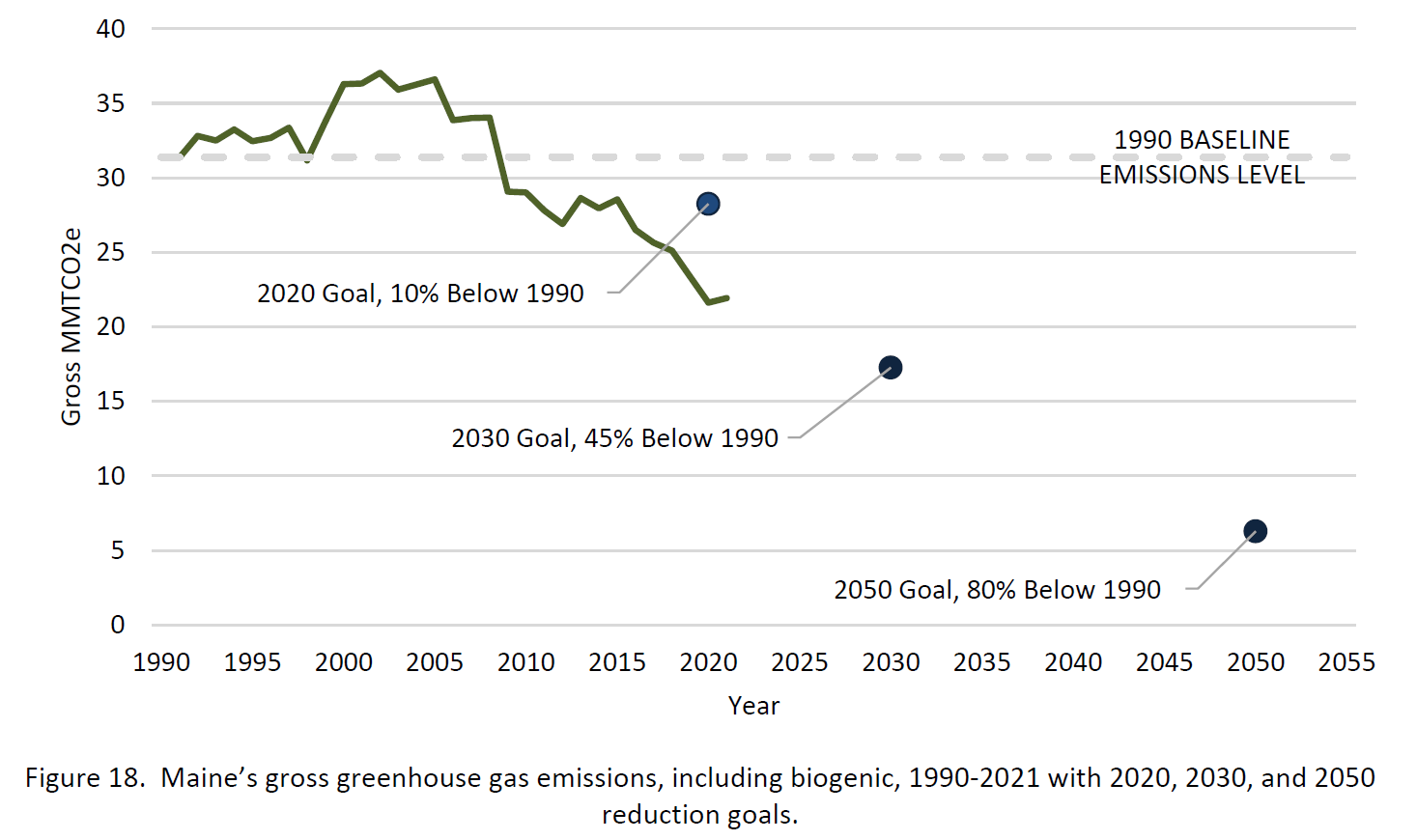Maine’s latest greenhouse gas emissions data gives a glimpse how people’s planet-warming activities have and haven’t rebounded since the height of the COVID-19 shutdown in 2020.
The state Department of Environmental Protection (DEP) released its Tenth Biennial Report on Progress Toward Greenhouse Gas Reduction Goals this week. The previous edition ran through 2019; this one runs through 2021.
The data shows Maine has officially met one of its short-term climate goals — reducing emissions 10% below 1990 levels by 2020. In fact, we’ve been exceeding that goal since 2016.
The big targets enshrined in state law still lie ahead: becoming carbon neutral by 2045, and reducing emissions at least 45% below 1990 levels by 2030 and 80% by 2050.
Note that “gross emissions” accounts for those from biogenic sources like the decomposition of wood waste and trash. Our “net emissions” are what’s left after all our trees, wetlands and grasslands have soaked up their share of those greenhouse gasses.

To that end, the DEP says Maine is 91% of the way to its carbon neutrality goal — no surprise given that Maine is 89% forested, more than any other state in the country. Our vast forestlands absorb much of Maine’s emissions without us lifting a finger (besides to conserve and steward those ecosystems).
But existing natural resources alone won’t get Maine to its climate goals — so let’s hone in on what is by far the biggest contributor to our emissions, which is the burning of diesel (or heating oil), gasoline and, to a lesser extent, other fossil fuels.
The report shows that overall fossil fuel emissions ticked back up slightly after a drop at the start of the pandemic. Let’s look closely at that data:
The transportation and electric power sectors dropped off in 2020 and bounced back in 2021. So did the commercial sector, to a lesser degree. Industrial emissions fell only very slightly. And the residential sector notched the biggest decline of the bunch.
But our home energy use is still the second-biggest source of emissions in Maine after transportation, which accounts for nearly half of Maine’s carbon emissions from burning fossil fuels. Emissions from these two sectors are also not declining as quickly as the others.
Even so, this data suggests Maine may be seeing more lasting progress on slowly backing away from its top-in-the-nation reliance on heating oil and moving toward more cleaner solutions like heat pumps. We’re also getting more efficient: Maine’s total energy consumption was 29% less in 2021 than in 1990, and our emissions per capita dropped 37% while our population rose 11% in the same period.
I’ll be really interested in the next emissions report — due out in 2026, with data up to 2023. This will show the impact of the past couple years’ spikes in oil and gas prices tied to the war in Ukraine, along with more of the continued impact of warming temperatures and progress on our energy transition.
We’ll also have a new four-year state climate plan by then, potentially with new interim targets for working toward these goals — and for sharing health and economic benefits among Mainers in the process.







